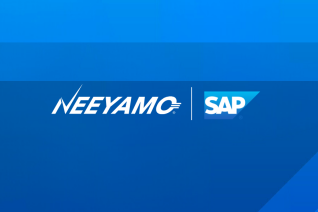Run your business seamlessly with Neeyamo as we help you go beyond borders to manage your international payroll and hire new talent in Guam.
Overview
Guam is an organized, unincorporated territory of the United States. It is located in the Micronesia subregion of the western Pacific Ocean and is the westernmost point and territory of the United States, reckoned from the geographic centre of the U.S. Guam's capital is Hagåtña, and the most populous village is Dededo. It is the largest and southernmost of the Mariana Islands and the largest island in Micronesia.
If your organization’s expansion plans require you to hire employees in Guam and you lack a physical entity in the country – a key requisite to hire local talent, your solution is right here with Neeyamo – Payroll management services. Neeyamo's global payroll solutions provide assistance for the onboarding and management of employees in Guam, along with the processing of a firm's payroll accounting and tax services, handling payroll risks and controls, compliance, benefits, and more.
Tools And Instances
Facts And Stats
Capital
Hagåtña
Currency
U.S. Dollar
Official Languages
English and Chamorro
Fiscal Year
October 1-September 30
Date Format
MM/DD/YYYY
Country Calling Code
+1-671
Time Zone
GMT+10
Global Payroll
Overview
Handling payroll for a widespread workforce can pose as a major challenge for any firm. The added complication of compliance can make things worse and drastically effect the time and efforts that can be used in other equally important aspects of an organization's development.
Over the years, Neeyamo has observed these complexities and strived to provide a global payroll solution through a single technology platform, Neeyamo Payroll.
Payroll Taxes
Payroll tax is the percentage amount retained from an employee's salary and paid to the government to invest in the welfare of the general population.
Employee Taxes
Old-age, survivors and disability insurance (OASDI) -6.2%
Hospital insurance (Medicare) -1.45%
Employee Tax Rates:
Individual income tax rate
|
Tax rate |
Taxable Income |
|
10% |
Up to $11,000 |
|
12% |
Over $11,000, but not over $44,725, plus $1,100 |
|
22% |
Over $44,725, but not over $95,375, plus $5,147 |
|
24% |
Over $95,375, but not over $182,100, plus $16,290 |
|
32% |
Over $182,100, but not over $231,250, plus $37,104 |
|
35% |
Over $231,250, but not over $578,125, plus $52,832 |
|
37% |
Over $578,125, plus $174,238.25 |
Employer Taxes
Employer Contribution:
- Old age, survivors and disability insurance:6.2%
- Hospital Insurance/Medicare:1.45%
Payroll Cycle
Overview
Undoubtedly, payroll is a critical aspect of any organization. The Pay cycle is a notable feature that provides a sense of accountability for an employee to be paid consistently for their work.
Frequency
Payroll frequency in Guam can vary depending on the nature of the employment and the preferences of the employer and employee. Common payroll frequencies include weekly, bi-weekly, semi-monthly, and monthly.
13th Month Cycle
13th-month pay is not mandatory.
Global Work
Overview
An Employer of Record service provider helps you get rid of the hassle of handling the complexities that come with setting up a new employee in remote locations. They act as legal employers, facilitate salary payments, and handle everything from health insurance, payroll taxes, and employee benefits to comply with local tax laws and regulations.
This ensures that the client company can focus on the employee’s everyday tasks safely in the knowledge that they have a cost-effective solution as they continue their global expansion.
HR Mandates and Practices
Minimum Wage
Effective January 1 , 2024, the minimum wage in Guam is $9.24/hr.
Overtime
Working Hours in Guam:
Guam generally has a 40 hours work week.
Overtime
Employees must be paid one and half times their regular wage of pay for all hours worked over 40 hours in a workweek.
Data Retention Policy
Retention Periods for Specific Records:
- ERISA(EMPLOYEE RETIREMENT INCOME SECURITY ACT) Records: Must be retained for 6 years (29 U.S.C. §1027)
- ADEA (AGE DISCRIMINATION ACT)Records: Must be retained for one year from the date of personnel action (29 U.S.C. § 626; 29 C.F.R. § 1627.3(b))
- FMLA(Family and Medical Leave) Records: Must be retained for 3 years (29 U.S.C. § 2616(b); 29 C.F.R. § 825.500)
Hiring and Onboarding Requirements
Hiring
In Guam, the Equal Employment Opportunity Commission outlines the employee rights and obligations.
Employers are prohibited from discriminating against job applicants or employees on the basis of race, gender, age, religion, disability ,sex or any other ground.
Onboarding
The specific onboarding documents required for employees in Belize may vary depending on the employer and the industry. However, some of the most common onboarding documents include:
- Name
- Address
- Contact information
- Emergency contact information
- Proof of Identity
- Educational Documents:
- Job offer and acceptance
- I-9 form- which requires driver’s license, passport, social security no.
- Visa Verification
Probation
Guam has a 90-day probation period.
Leave
Overview
The statutory public holidays in Guam for the year 2024 are as follows:
- January 1 - New Year’s Day
- January 15 - Martin Luther King Jr. DAay (Observed)
- March 4 - Guam History & Chamorro Heritage Day
- May 27 - Memorial Day
- July 4 - Independence Day
- July 22 - Liberation Day (Observed)
- September 2 - Labor Day
- November 1 - All Souls Day (Observed)
- November 11 - Veterans Day
- November 28 - Thanksgiving Day
- December 9 - Santa Marian Kamalen Day (Observed)
- December 25 - Christmas Day
Family and Medical Leave
Under the FML, eligible employees who work for a covered employer can take up to 12 weeks of unpaid, job-protected leave in a 12-month period for the following reasons:
To care for the employee’s spouse, child, or parent who has a qualifying serious health condition, For the employee’s own qualifying serious health condition, For qualifying exigencies related to the foreign deployment of a military member who is the employee’s spouse, child, or parent.
Sick Leave
Employees have the right to 13 days of paid sick leave, which can be used for various reasons such as physical or mental illness, injury, medical appointments, pregnancy, childbirth, or quarantine. Unused sick leave can be saved and carry over in future years without any restrictions, or one can also use leaves under FML for 12 weeks.
Maternity Leave
Under the FMLA, employees have the right to take leave for the birth of a child, or for adopting or fostering a child. Female employees in permanent positions are granted 20 days of maternity leave for childbirth or adoption of a child under five years old. Additional leave beyond this period can be taken as unpaid leave, with a maximum total leave duration of six months.
Paternity Leave
Under the FMLA ,twenty (20) days of paternity leave is granted to a male employee occupying a permanent position who is absent from work because of childbirth or adoption of a child(ren) five (5) years old or younger. Employees can take any additional leave for childbirth or adoption purposes as unpaid leave. Total leave, sick or unpaid leave shall not exceed six (6) months without supervisory approval.
Bereavement Leave
Employees are entitled to a total of fourteen (14) calendar days of family leave upon the death of each family member. Eligible employees should have worked for the employer for more than 12 months and have a minimum of 1,000 hours of service in the 12 months before taking leave.
Termination
Overview
An employer cannot terminate an employee based on discriminatory reasons like race, religion, gender, age, or disability (protected classes). This is illegal under federal law.
Offboarding Process
There's no specific legal mandate for an offboarding process in Guam, but best practices recommend the following:
Notice: Employers generally aren't required to provide notice before termination (unless a contract dictates otherwise). However, it's good practice to provide a reasonable notice period, especially for salaried employees.
Final Paycheck: All earned wages, accrued vacation time, and other compensation must be paid to the employee by the next regular payday or sooner.
Notice Period
Guam law doesn't prescribe a mandatory notice period.
Severance Pay
Guam law does not mandate severance pay for private employees. This means employers are not legally required to provide financial compensation to a terminated employee unless there's a specific agreement in place.
Visa
Overview
For work purposes, you would likely need to apply for a U.S. visa that allows you to work, such as an H-1B visa for specialty occupations, an L-1 visa for intra-company transferees, or an O-1 visa for individuals with extraordinary ability or achievement.
The specific documents required for these visas would depend on the type of visa you are applying for and the specific requirements of the U.S. Department of State and U.S. Citizenship and Immigration Services (USCIS). For applicants holding non-US passports, a copy of a valid residence permit in the United States is required.
Some of the common documents they must provide include:
- A passport-style photo
- A scanned copy of the passport
- A copy of their flight itinerary
- Proof of yellow fever vaccination
- A business letter from your company
- A completed visa application form
Employee Background Checks
Legal and Background Checks
In Guam, the Fair Chances Hiring Process Act (FCHPA) governs the background check process for private sector employees. According to the FCHPA, employers are not allowed to request police clearance or court clearance as part of the application for employment. However, upon making a conditional job offer, an employer may request evidence of any pending criminal cases or criminal history from the employee. This law applies to all employers with more than 15 employees, including private-sector employers, and the local government.
The following are types of background checks frequently encountered:
- Employment Verification
- Identity Verification
- Education Verification
- Medical Examinations
- Education and Employment Verification
- Professional License Verification
- Financial Checks
Last updated on March 19, 2024
If you have any queries or suggestions, reach out to us at irene.jones@neeyamo.com
¿Tiene consultas? Póngase en contacto con nosotros
Póngase en contacto con uno de nuestros expertos y obtenga una demostración rápida de nuestros servicios






